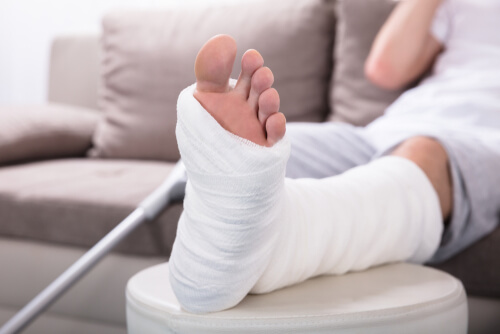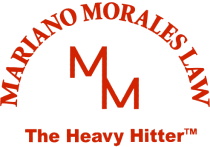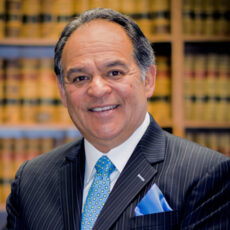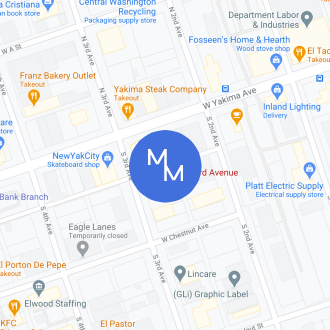Fractures & Broken Bones in Car Accidents

“Fracture” is the medical term used to refer to a broken bone. Although the bones in the body are amazingly strong given their size and the weight they bear, they can crack or break. A car accident is one of the most common causes of a fracture in a victim’s arms or legs, although a break in any of the 206 bones in the body can occur in a car accident.
Occupants of a vehicle have a natural, defensive reaction to an impending collision. Most stretch out their legs and arms in an attempt to brace for the crash. Unfortunately, this may actually increase the risk of a fracture upon impact. A crash can cause bones in the legs, feet, hands and arms to break.
Types of Fractures
Fracture injuries are classified and categorized depending on several factors. Where the fracture occurs, the physical characteristics of the fracture and the severity of the fracture are all important.
The four general categories within which fractures are divided include:
- Displaced – In a displaced fracture, the bone breaks into two or more pieces that then move or shift such that they are no longer aligned correctly.
- Non-displaced – If you suffer a non-displaced fracture, this means that the bone broke, but the pieces remained in place and the bone remains aligned.
- Open – In an open fracture, the break caused the bone to move such that it pierced the skin, causing an open wound in addition to the fractured bone.
- Closed – A closed fracture is a broken bone that did not cause an open wound. With many closed fractures there are very few outward signs of the break.
Other important terms that are used in the classification of bone fractures include:
- Transverse fracture – This is a fracture that is at a right angle to the bone’s axis.
- Oblique fracture – This refers to a fracture where the break has a curved or sloped pattern to it.
- Impacted fracture – This is a fracture in which the ends of a bone have driven in to each other. Also known as a “buckle” fracture, it occurs most often in children. Impacted fractures are commonly located in the arms.
- Comminuted fracture – This refers to a type of displaced fracture that occurs when a bone breaks or shatters into numerous pieces.
- Greenstick fracture – This is an incomplete fracture where the bone is bent but not completely broken. These occur most often in children whose bones are still growing.
Severity of a Fracture
The severity of a fracture can vary considerably. Some of the factors that impact the severity of a fracture injury include:
- Location – Where a fracture injury is located in the body will affect how long it takes to heal and the possibility of long-term damage. A fracture in the finger, for instance, will usually heal more quickly and with fewer problems than a fractured pelvis.
- Classification or alignment – Setting a non-dislocated fracture is usually easier than setting a dislocated fracture. Sometimes a fracture cannot be set, as is usually the case with a comminuted fracture. The more pieces into which a bone breaks, the more likely the victim will suffer long-term complications.
- Wound type – A fracture that includes an open wound is often more complicated than a closed fracture. An open fracture also carries the danger of infection and a longer healing time.
- Health and age of victim – Both young and old victims are at higher risk for broken bones in car accidents. They are also harder to treat as a general rule. As people age, their bones become more brittle and easier to break. Older people also tend to heal more slowly and run the risk of additional complications due to an overall decline in health. On the other end of the spectrum, young victims have bones that are still growing, making the healing process potentially more problematic and increasing the risk of long-term complications from a fracture.
Treatment of a Fracture
Victims of car accidents should have a thorough medical examination immediately following the collision. While some fractures are obvious, others are not as immediately apparent. A skull fracture, for instance, is rarely diagnosed without a complete examination by a physician, yet this type of fracture could be life-threatening if left untreated. Even a simple fracture left untreated may not heal properly. When a fracture fails to heal properly, it could lead to permanent disfigurement and infection.
Doctors will typically order X-rays or other diagnostic tests if a fracture is suspected. Once diagnosed, the area may be splinted and immobilized for a few days. Because of the potential for swelling in the area around a fracture, a permanent cast may not be applied until a few days later.
Some fractured bones are unlikely to heal properly without surgical intervention. Dislocated fractures, for example, may be so far out of alignment that they require surgery. The surgeon may need only to properly align the bones before applying a cast. In other cases, metal rods, screws, plates or other hardware may be needed to hold the bones together during the healing process or permanently.
Mariano Morales Law Helps Yakima Car Accident Victims with Fractures
If you have suffered a broken bone in a Washington State car accident, you may be entitled to compensation for your injuries. Contact the Washington State car accident lawyers at Mariano Morales Law for a free initial consultation. Call us now at (509) 853-2222 or fill out our online contact form.
We represent injured people in Yakima, the Tri-Cities (Richland, Pasco and Kennewick), Wenatchee, Grant County and Chelan County. We pride ourselves on thoroughly and skillfully reviewing every record of every doctor. Our first priority is to make sure our clients get the best medical attention for their injuries. Find out today how we can help you.




